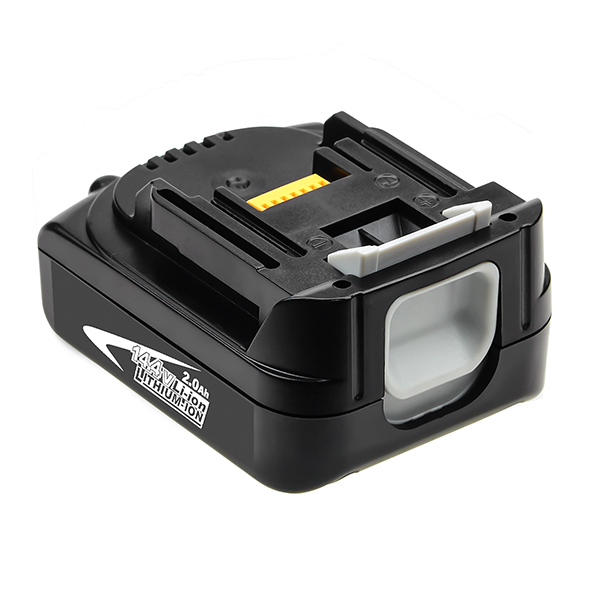
- Products
- Solutions
- Customization
- About
- Resources
- Contact
- Request A Quote
Thermal runaway is one of the most serious safety concerns associated with lithium-ion batteries. As lithium-ion cells are widely used in tools, electric vehicles, and consumer electronics, understanding this phenomenon has become crucial for both manufacturers and users. Thermal runaway refers to a chain reaction where excessive heat causes the internal temperature of a battery to rise uncontrollably, potentially leading to fire, explosion, or system failure. In this article, we will explore how thermal runaway occurs, its common causes, detection methods, and practical prevention strategies to improve battery safety and reliability.
To begin, it’s important to understand what thermal runaway means in the context of lithium-ion batteries. A lithium-ion cell operates safely within a specific temperature range, typically between 0°C and 45°C during charging. However, when a cell overheats due to internal or external factors, the chemical reactions inside can accelerate uncontrollably. This generates even more heat, leading to a self-sustaining cycle that may damage the separator, release flammable gases, or cause an explosion.
In simple terms, thermal runaway is a feedback loop where heat causes more heat. Once initiated, it’s very difficult to stop without external intervention. The key to safety lies in identifying early warning signs and preventing conditions that can trigger it.
There are several reasons why lithium-ion batteries experience thermal runaway. Understanding these causes helps engineers and users take preventive measures before a serious issue develops.
When a lithium-ion battery is charged beyond its voltage limit (typically 4.2V per cell), it may cause lithium plating on the anode and increase internal pressure. Over time, this can lead to short circuits and excessive heat generation.
Manufacturing defects, contamination, or physical damage can cause internal shorts. Once a short circuit occurs, large current flow generates intense localized heating, triggering the runaway process.
Batteries stored or used near high-temperature environments—such as engines, direct sunlight, or heat-generating equipment—are more prone to thermal stress and may reach unsafe operating temperatures.
Dropping or puncturing a lithium-ion pack can deform internal layers or damage the separator, which isolates the anode and cathode. Once that separator fails, a short circuit and subsequent thermal runaway can occur almost instantly.
A reliable BMS is essential to monitor voltage, current, and temperature. Inadequate or malfunctioning BMS can fail to detect abnormalities in time, increasing the likelihood of overheating or imbalance between cells.

Early detection can significantly reduce the risk of catastrophic battery failure. Here are some indicators that may suggest the onset of thermal runaway:
|
Warning Sign |
Description |
Recommended Action |
|
Rapid temperature increase |
Unusual heating during charge or discharge |
Stop using and inspect immediately |
|
Swelling or bulging |
Indicates internal gas buildup |
Isolate and avoid recharging |
|
Unusual odor or smoke |
Sign of electrolyte breakdown |
Move battery away from heat sources |
|
Voltage drop under load |
Could suggest internal damage |
Check with diagnostic equipment |
|
BMS alert |
Over-voltage, over-current, or temperature warning |
Follow system shutdown procedures |
Early intervention is key. Disconnecting power, relocating the pack to a safe area, and allowing it to cool can prevent escalation.
Prevention focuses on minimizing the risk factors that can trigger the runaway chain reaction.
Always choose lithium-ion batteries from trusted manufacturers that follow international safety standards such as UL, IEC, and UN38.3. High-quality cells are better designed to withstand stress and maintain stability under load.
A well-designed BMS ensures real-time monitoring of voltage, current, and temperature. It can cut off charging or discharging when abnormal conditions are detected, effectively preventing overcharging and over-discharging.
Adequate heat dissipation plays a major role in preventing overheating. Thermal pads, heat sinks, or air-cooling systems can help regulate temperature, especially in high-power applications like power tools and EVs.
Store lithium-ion batteries in cool, dry environments away from direct sunlight. Avoid stacking or crushing them. For long-term storage, keep batteries at around 40–60% charge and check periodically for swelling or leaks.
Battery pack design should include flame-retardant materials, protective circuits, and mechanical barriers between cells. Engineers can also integrate pressure relief valves and venting systems to safely release gas if overheating occurs.
To further illustrate, here are some practical examples of how leading battery manufacturers and pack assemblers improve safety:
|
Safety Feature |
Function |
Benefit |
|
BMS with thermal cut-off |
Shuts down when temperature exceeds limit |
Prevents overheating |
|
PTC (Positive Temperature Coefficient) devices |
Increases resistance when current rises |
Limits current flow |
|
CID (Current Interrupt Device) |
Disconnects circuit during overpressure |
Avoids explosion risk |
|
Thermal fuses |
Breaks circuit if heat builds up |
Protects from chain reaction |
|
Pressure relief vents |
Allows safe gas release |
Reduces fire hazard |
These components are critical to maintaining battery stability and preventing accidents in real-world applications.
Thermal runaway in lithium-ion batteries is a preventable hazard when proper design, monitoring, and handling practices are in place. By understanding its causes and implementing effective safety strategies, users and manufacturers can minimize risks and extend battery lifespan.
If you’re looking for reliable, high-performance lithium-ion battery packs with enhanced safety features, RHY Battery provides professional solutions tailored to your needs. As a trusted DeWalt battery replacement supplier, RHY Battery ensures strict quality control, advanced protection systems, and long-lasting performance for industrial and power tool applications.